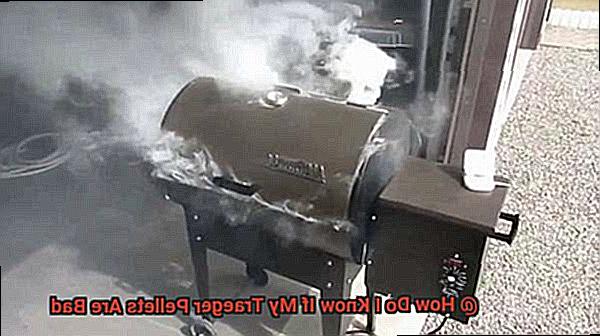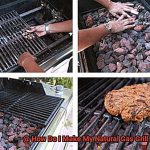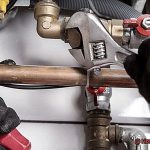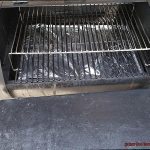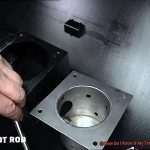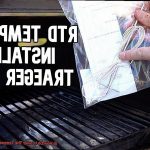Imagine this: you’ve got a backyard full of your closest pals, and the smell of smoked meat is wafting through the air. But when you take a bite, something’s not right. The flavor isn’t what you were expecting – it’s almost rancid. You start to wonder if it’s the Traeger pellets that caused this disaster. How do you know if your Traeger pellets are bad?
It’s worth noting that Traeger pellets can go bad if they’re not stored properly, just like any fuel source. You don’t want to waste your expensive pellets or – worse yet – ruin your food with them. Luckily, there are some simple ways to tell if your Traeger pellets have gone bad.
In this blog post, we’ll explore how to spot bad Traeger pellets and prevent them from going bad in the first place. Whether you’re an experienced barbecue pro or just starting out, this information will be essential for ensuring that every bite of your food is mouth-wateringly delicious. So let’s dive in and learn everything there is to know about Traeger pellets.
Contents
What are Traeger Pellets?
These 100% natural and food-safe pellets are specially designed for use in Traeger grills and smokers, and they offer a wide variety of flavors that will elevate your cooking to the next level.
One of the biggest advantages of using Traeger pellets is that they provide a consistent heat and smoke output. This means that your food will be cooked evenly, without any hot or cold spots. Whether you’re cooking a brisket or a rack of ribs, you can be sure that every bite will be just as delicious as the last.
Another great thing about Traeger pellets is their versatility. With so many different wood types available, including hickory, mesquite, apple, cherry, and oak, there’s no shortage of options for experimenting with new flavors. Each type of wood has its own unique flavor profile and aroma, allowing you to tailor your cooking to match your personal taste preferences.
However, not all Traeger pellets are created equal. It’s important to check for signs of bad pellets before using them on your grill. If your pellets smell like chemicals or mold, have a different color than usual or leave excessive ash buildup, it’s best to dispose of them and purchase a new bag. Using bad pellets can ruin the taste of your food and even damage your grill.
Signs of Bad Traeger Pellets
Before you fire up your grill, it’s essential to know the signs of bad pellets that can ruin your food and damage your grill. Here are some things to look out for when checking for bad Traeger pellets.
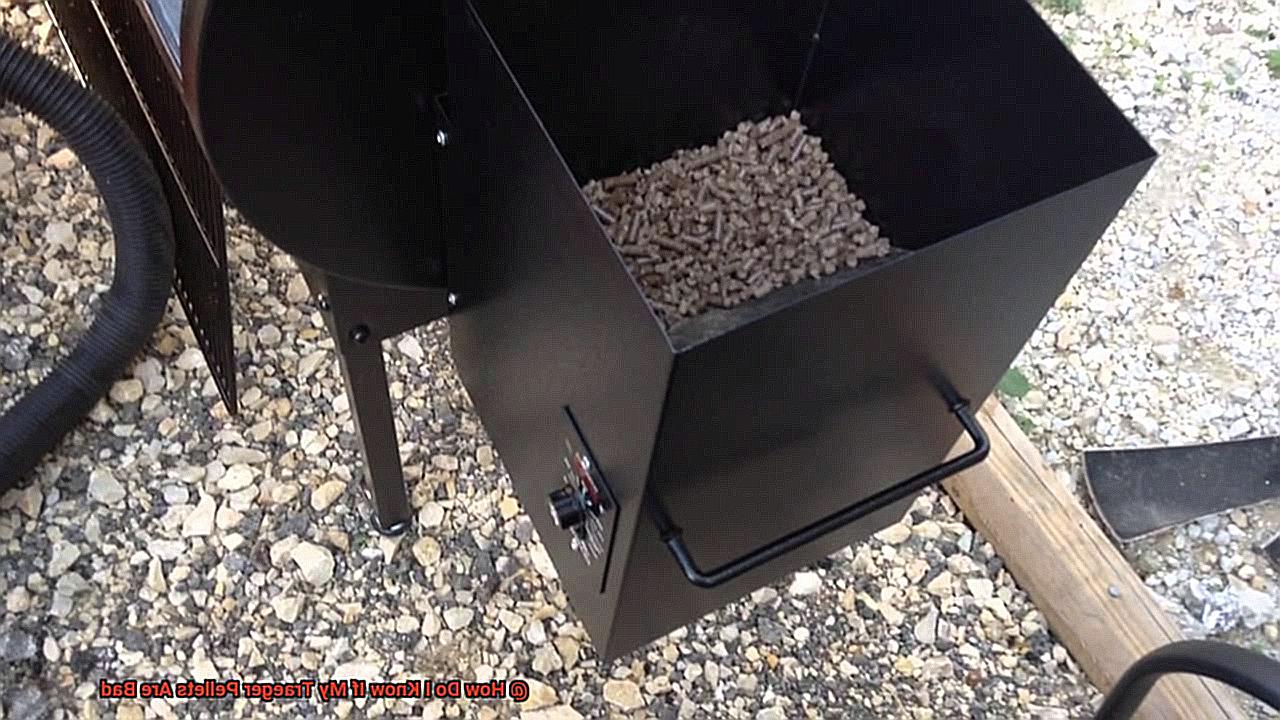
Firstly, use your nose. If you detect a musty or moldy odor from the pellets, it’s a sure sign they’ve been exposed to moisture and gone bad. It’s best to avoid using these pellets as they can make your food taste gross. Another way to check for moisture is by looking for clumps in the pellets. Clumps indicate that the pellets have absorbed moisture and may not burn well.
Next up, discoloration. Old or discolored pellets may not burn properly and can affect the flavor of your food. If you notice any unusual color changes in your pellets, it’s best to toss them out. Additionally, high-quality Traeger pellets are uniform in size and shape, whereas low-quality pellets tend to vary in size and shape. If you notice a significant difference in the size and shape of your pellets, it could be an indication that they are of poor quality.
Lastly, keep an eye on excessive ash and smoke production during cooking. Poorly made or old pellets tend to produce more ash and smoke than high-quality pellets, which can make a smoky mess that nobody likes.
Strong Smell
Just like the unmistakable odor of sour milk, a pungent aroma from your pellets means it’s time to toss them out. But what exactly could be causing this stench?
Moisture is a common culprit. If your pellets have been exposed to water or other contaminants, they can break down and spoil, resulting in a sour or musty smell. This odor can be indicative of mold or mildew growth, and it’s not something you want anywhere near your food.
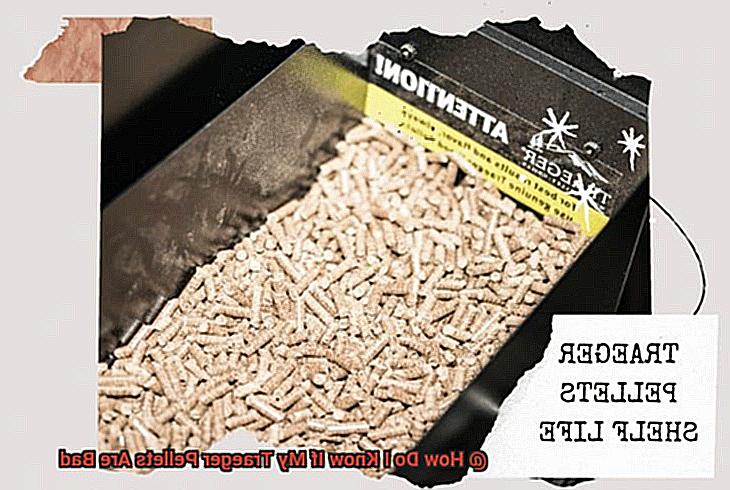
Contamination is another possible cause of a strong odor. A chemical or synthetic smell could mean that your pellets have been contaminated with foreign substances. And let’s face it: nobody wants to grill their food over a bed of chemicals.
But fear not. By taking a few simple precautions, you can avoid these unpleasant odors altogether. First and foremost, store your pellets in a dry and cool location, away from any sources of moisture or humidity. Don’t stash them in the basement or garage if those areas tend to get damp. And always inspect the bag before purchase to make sure there are no tears or signs of damage.
If you do happen to detect a funky smell coming from your pellets, don’t hesitate to dispose of them and purchase a fresh bag. Trust me, it’s not worth risking any potential health hazards or ruining your food with bad-tasting smoke.
Color
Color is a crucial factor in determining the quality of Traeger pellets. Good pellets should have a consistent and distinct color throughout the bag. Any discoloration or unevenness could be a sign that the pellets are old or have been exposed to moisture.
Grayish or brownish pellets are also a red flag. These colors may indicate that the pellets are past their prime and no longer suitable for use. So, be sure to inspect the bag before purchase.
When it comes to Traeger pellets, smoke tells a story too. Good pellets should produce a thin, blue smoke that enhances the flavor of your food. Thick, dark smoke with an unpleasant odor could mean that the pellets contain impurities or have been contaminated, which can turn your grilling experience into a nightmare.
It’s essential to keep in mind that different types of wood produce different colors. Oak pellets may appear darker than apple pellets, but as long as the color is consistent and there are no signs of discoloration or unevenness, the pellets should be of good quality.
Ash Content
If you’re serious about achieving optimal flavor and performance from your Traeger pellets, you need to pay attention to one important factor: ash content.
In a nutshell, ash content is the leftover residue that remains after your wood pellets have been burned. But don’t underestimate its importance – ash content can significantly impact the quality of your grilling experience.
So how do you determine the ash content of your Traeger pellets? The process is simple. Just weigh a sample of pellets before burning them, then burn them in a controlled environment like your grill or smoker. Once they’ve burned, weigh the remaining ash residue. The difference between the initial weight and the weight of the ash is the ash content.
But what does ash content really tell us about our pellets? Well, high-quality Traeger pellets will generally have lower ash content. This is because they’re made from pure hardwood with minimal additives and fillers. Lower ash content also means less time spent cleaning and maintaining your grill – a win-win situation.
On the other hand, if you find that your Traeger pellets have a high ash content, this could be a red flag indicating that they’re of lower quality or contain more fillers. To avoid disappointment and subpar grilling results, it’s best to switch to a different brand or supplier that provides high-quality pellets.
Flavor
Attention all grill masters. As we all know, flavor is the name of the game when it comes to grilling up a storm. And when it comes to Traeger pellets, the quality of your fuel can make or break your entire grilling experience. But fear not, my friends. There are a few key ways to ensure that your Traeger pellets are up to snuff in the flavor department.
First things first, if your food has a bitter or acrid taste, it’s a clear indication that your pellets are past their prime or have been exposed to moisture. Trust me, no one wants to taste old socks in their perfectly grilled meal. So, be sure to use fresh pellets and keep them dry to avoid this issue altogether.
Another sign of bad pellets is if your food has a strong chemical taste. This can happen if you use low-quality pellets that contain fillers or chemicals. It’s essential to choose high-quality, all-natural pellets from reputable brands to ensure that you’re not ingesting any harmful substances while enjoying your meal.
Furthermore, if your food lacks flavor altogether, it could be that your pellets aren’t producing enough smoke. This can be due to a clogged or dirty grill, which can prevent the pellets from burning properly and producing smoke. Regular cleaning and maintenance of your grill can help prevent this issue and ensure that you’re getting the best possible flavor from your Traeger grill.
Disposal of Bad Pellets
Attention all grill masters, we know that bad Traeger pellets can put a damper on your BBQ experience. Whether they were improperly stored or exposed to moisture, it’s crucial to dispose of them correctly to avoid fire hazards and protect the environment.
First and foremost, resist the urge to toss them in the trash. These pellets contain a high concentration of wood fibers and sawdust, making them susceptible to heat and flames. Instead, consider burning them in a controlled setting like a campfire or fire pit. This not only allows you to use them for their intended purpose but also reduces the risk of fire hazards. However, keep a watchful eye on the fire and don’t leave it unattended.
Another eco-friendly option is composting the bad pellets. The sawdust and wood fibers provide valuable nutrients for plants and can help create healthy soil. Simply add them to a compost bin along with other organic materials and wait for them to decompose over time. Your garden will thrive with these rich nutrients.
If neither of these options work for you, contact your local waste management facility or recycling center for specific guidelines on disposing of sawdust and wood products safely.
Potential Damage from Bad Pellets
Then listen up – the quality of your pellets can make or break your entire grilling endeavor. Using bad pellets can lead to potential damage to both your grill and your food, so let’s dive into the potential dangers.
First and foremost, using poor quality pellets can cause serious damage to your Traeger grill. Low-quality pellets often contain high levels of moisture or impurities that can cause them to break down and produce excessive amounts of ash. This build-up can clog up your grill’s burn pot, auger, and fan, leading to a decrease in performance and potentially causing long-lasting damage. Don’t let bad pellets ruin your beloved grill.
But the damage doesn’t stop there. Bad pellets can also affect the taste and quality of your food. Some low-quality pellets may contain fillers or binders that release harmful chemicals when burned. These chemicals can be absorbed by your food, potentially causing health problems if consumed regularly. You don’t want to risk your health or the flavor of your meal, do you?
Lastly, using bad pellets can also be a waste of time and money. Poor quality pellets burn faster and less efficiently than high-quality ones. This means you’ll need to use more pellets to achieve the same results, increasing your overall cost and leading to more ash buildup in your grill.
So what steps can you take to avoid all these potential issues? It’s simple – pay close attention to the quality of your pellets. Opt for high-quality pellets without fillers or binders that guarantee safe and efficient grilling every time.
Conclusion
In conclusion, Traeger pellets are the key to unlocking the perfect smoky flavor in your grilled and smoked dishes. But just like any other fuel source, they can go bad if not stored correctly. Signs of bad Traeger pellets include a musty or moldy odor, unusual discoloration, clumps, excessive ash buildup, and thick dark smoke with an unpleasant smell. To avoid these issues, it’s critical to store your pellets in a dry and cool location away from moisture or humidity.
Furthermore, keeping an eye on the color and ash content of your pellets is crucial for ensuring that you’re using high-quality pellets that burn efficiently and produce consistent heat and smoke output. Poor quality pellets can damage your grill and impact the taste and quality of your food.
Therefore, always choose all-natural pellets from reputable brands that guarantee safe grilling every time. If you detect any signs of bad pellets, dispose of them correctly by burning them in a controlled setting or composting them. These simple guidelines ensure that each bite of your food is mouth-wateringly delicious without any unpleasant surprises.
So don’t compromise on the quality of your Traeger pellets – invest in high-quality ones to enhance the flavor of your grilled dishes.

